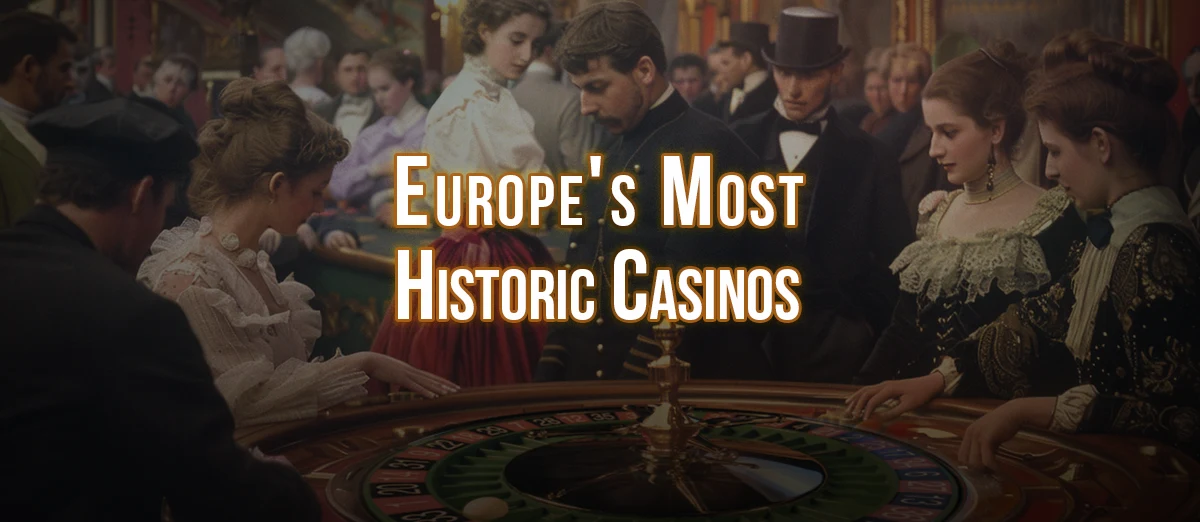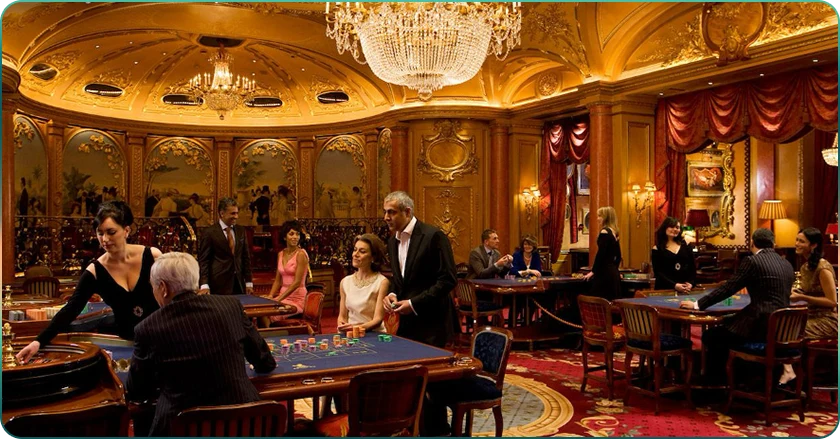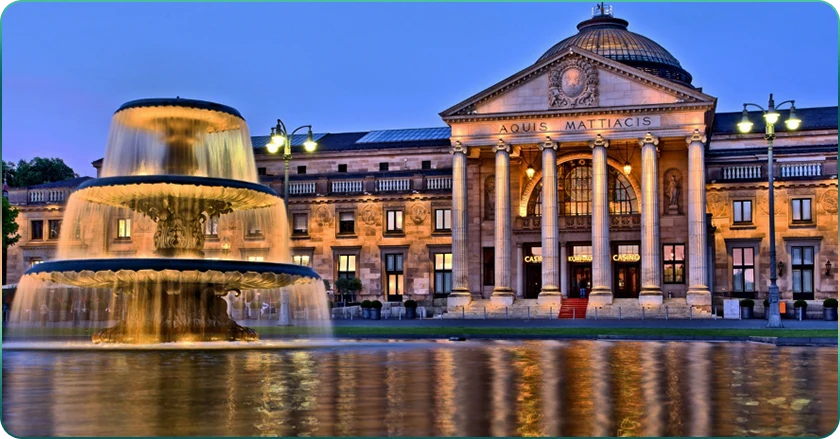A Journey through Europe’s Oldest and Most Revered Casinos

European casinos and gambling houses date back as far as the 14th, these mainly being frequented by royalty in countries such as France, Germany and Austria. In the medieval ages, they played a crucial role, often acting as the perfect social foils for teeing up trade deals, negotiating royal marriages to forge alliances between different countries, in addition to providing much-needed entertainment to weary soldiers.
Although most commonly used by the upper class of society, brick-and-mortar casinos were a place to find members of the bourgeoisie (or emerging merchant class) whose fortunes were on the rise and crucial to the nobility.
As such, casinos swiftly became very popular and soon held an almost symbolic role in medieval European culture. Because of this, it was realized that venues befitting the status of their customers were required, and it wasn’t long before grand and elegant establishments were constructed.
Throughout the centuries, we have seen many fine casinos built across the continent as gambling became more mainstream and opened up to the masses. As a result, there is a great selection to choose from, so join us as we take a tour through some of the most historic casinos in Europe!

Casino di Venezia
Where better for the Europe’s oldest casino to be than, arguably, the most iconic city on the planet? It is understood that the Casino di Venezia opened its doors to customers in 1638, and it is still in operation today.
Based in Venezia (Venice) and situated on the banks of the Grand Canal, it makes for an idyllic and fascinating journey through the waterways to get there, making it one of the more exotic land-based casinos on our list. The building’s exterior is as grand and elegant as you might imagine, typical of the type of style that you might expect.
It was the brainchild of the architect Mauro Codussi and is still said to retain some of its original features, even today. Unbeknown to many, it was closed in 1770 because it was believed that gambling had led to the gradual impoverishment of the noble classes. As such, the authorities banned all forms of gambling in the country.
The casino reopened its doors in the 1930s, with gambling allowed in the country. Of course, over the centuries and later decades of the 20th century, it has undergone extensive renovation to modernize; however, this was in keeping with the work and style of the original architect.
Casino de Spa
Having opened in 1763, the Casino de Spa in Belgium certainly ranks as one of the oldest casinos in Europe. Created by the architect Jean-Barthelemy Liege Digneffe, it was understood to be one of Europe’s main venues and, ultimately, business meeting places of the nobility.
However, in 1789, the casino endured significant damage due to fires and this plus the fact that authorities imposed strict restrictions against gambling, it was never quite the same again.
In 1917, the casino suffered another major fire (it is unclear whether this was related to the First World War), and, as a result, the venue was completely obliterated.
Following years of redevelopment, the casino opened again and stood at 1,500 square meters, attracting both locals and tourists alike. Also situated in the popular area of Spa, the region is known for its health qualities and being a globally renowned natural source of mineral water.
Casino de Monte Carlo
Arguably the most well-known and iconic casino in Europe, Casino de Monte Carlo witnessed a rise in status due to its high-roller poker tournaments and the significant number of billionaires and members of the jet-set that it attracts through its doors every year.
Based in the popular yet elite gambling resort of Monte Carlo in the French principality of Monaco, the Casino de Monte Carlo was opened in 1863 - the original idea behind it being to save the House of Grimaldi from financial ruin.
An imposing and spectacular structure, it is certainly one of the biggest jewels in Monte Carlo’s crown and really is a picture of elegance. Indeed, it was also the source of inspiration behind the reboot of one of the James Bond movies, Casino Royale, in which actor Daniel Craig made his debut.
Without a doubt, one of the flagship historical casinos of Europe, interestingly, all citizens of Monaco are prohibited from entering, either as a customer or employee - an initiative that was introduced by the de facto regent of Monaco - Princess Caroline.
Casino Baden-Baden
Another based in Germany, the Casino Baden-Baden is steeped in history, with the famous America/Geman actress and singer Marlene Dietrich once famously describing the venue as “the most beautiful casino in the world”.
It is fair to say she was not exaggerating. Inside, it is simply breathtaking, reminiscent of a royal ballroom. Designed in 1824 by the architect Friedrich Weinbrenner, the casino only really increased in popularity and continental prestige during the 1830s following the gambling ban in neighboring France.
Located deep in the Black Forest region of Germany, Casino Baden-Baden is set on its own grounds and surrounded by natural beauty.
Due to its impressive location and elegance, the venue has also been used for various important events over the decades, including NATO summits, IOC (International Olympic Committee) conferences and international chess tournaments.
Salzburg Casino
Having opened its doors in 1934, the Salzburg Casino is known for its unique Baroque architecture and became an important part of trade in Austria. However, the casino closed five years later due to the Second World War.
When it reopened in 1950, this became a major draw to gambling enthusiasts and, in the decades that followed, attracted 10s of thousands of tourists and locals.
In 1993, the casino relocated to Schloss Klesseim. Set in its own stunning grounds, the approach to the casino is highly impressive, while the exterior is almost palatial. Without a doubt, a visual feast and possibly one of the most underrated gambling establishments in Europe.
It is understood that in 1938, while staying at the nearby Berghof, Adolf Hitler used the establishment to welcome fellow dictator Benito Mussolini, while during the Cold War, the neutral Austrian government used it to host President Richard Nixon and the Russian Chancellor Bruno Kreisky. The residence also played a key part in the failed plot to take down Hitler during the Second World War by several Wehrmacht officers, notably General Claus von Stauffenberg.
As a result, visitors are steeped in history from the first second of arriving at the venue; its poignancy alone provides a great experience.
Kurhaus Wiesbaden Casino
It is thought that the Kurhaus Wiesbaden Casino is the most beautiful establishment of its kind in the world because of its highly impressive decorations and Art Nouveau architecture.
According to historical reports, there are rumors that Russian novelist Fyodor Dostoevsky lost a considerable sum of money in the casino, namely on the roulette tables, which, over the decades, has emerged as a claim to fame for the casino. Meanwhile, it is also thought that Napoleon Bonaparte was a regular visitor to the establishment.
The city of Wiesbaden is also a major tourist attraction, known for its natural thermal waters and during the 1700s, there was a considerable increase in visitors to the area, with the casino appearing to benefit.
Today, the casino is a popular spa resort, while in 1907, a bigger gambling hall was added, which also included facilities for concerts, balls and banquets.

How Do Historical Casinos Compare to Modern Ones?
Of course, there are also many other historic casinos around Europe, though, which are considered to be more modern and newer. Effectively, there are a lot more of these to choose from, while some also offer hotel facilities.
Certainly, it is possible to find casinos that double as hotels in some of the Alps’ most famous ski resorts, offering guests the ultimate experience in entertainment. Of course, these are a lot newer and more in line with the ‘Vegas’ casino vibe, though they can still provide a nice alternative.
When entering a historic casino, for many, it is more about the feeling that guests experience once they’re inside and letting them be absorbed by the atmosphere. Invariably, older European land-based casinos have a great story to tell, and it is often these that act as selling points - indeed, they are usually woven into the very fabric of the venue. Without visiting one of these, it is hard for a passive enthusiast to really understand.
In addition, more historic casinos are protected by foundations, especially if they have great architectural significance, and, as a result, some of them are subject to preservation grants to ensure that they stay well-kept. It also means that should any improvements or renovations be wanted, invariably, permission would need to be granted, while they would need to be restored in a way that stays true to the original style, with original features still being retained.
New casinos, though, can use any type of material they want and, within reason, be designed in any way that they want. Certainly, places like Las Vegas, Macau and Singapore play host to some of the most radically designed casinos in the world, acting as impressive tourist attractions, regardless of whether gambling has anything to do with this.
Despite this, Europe’s oldest casinos will likely continue to have a special position in many gambling enthusiasts’ hearts for what they represent, while many people also prefer to acknowledge and pay tribute to their place in history. Ensuring that these are able to stay open will be seen as an important priority.





Review this Blog
Leave a Comment
User Comments
comments for A Journey through Europe’s Oldest and Most Revered Casinos